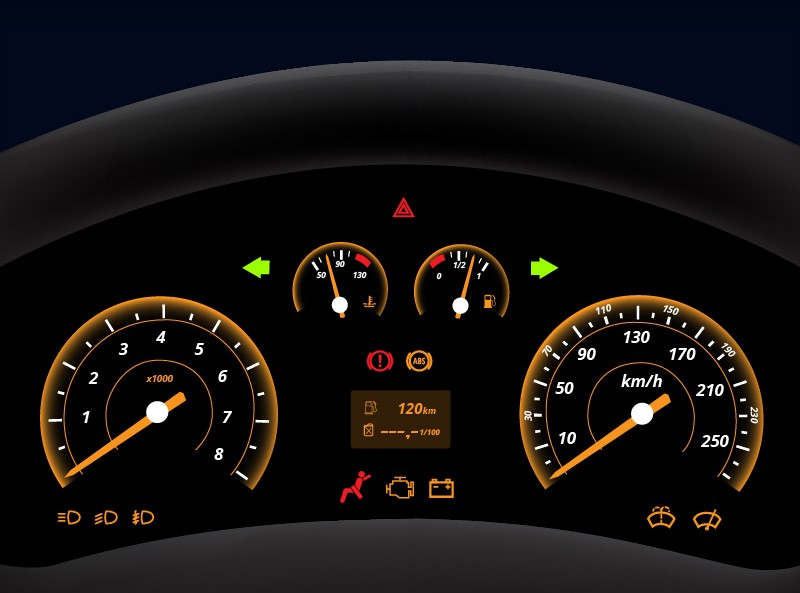The Check Engine Light is one of the most common warning lights on a vehicle’s dashboard. When this light illuminates, it indicates that there is a potential issue with the vehicle’s engine or its related systems. It’s essential not to ignore the Check Engine Light, as it can help identify problems early and prevent further damage. In this article, we will explore the common triggers for the Check Engine Light and discuss the importance of diagnosing the issue promptly.
Understanding the Check Engine Light: The Check Engine Light, often depicted as an engine symbol or the words “Check Engine” on the dashboard, serves as an indicator of a potential problem within the engine or its associated systems. When the light illuminates, it means that the vehicle’s onboard diagnostic system (OBD-II) has detected an error code related to engine performance or emissions.
Common Triggers for the Check Engine Light:
- Oxygen Sensor Malfunction: The oxygen sensor monitors the amount of oxygen in the exhaust gases. A faulty oxygen sensor can lead to decreased fuel efficiency, increased emissions, and trigger the Check Engine Light.
- Loose or Faulty Gas Cap: A loose or faulty gas cap can cause a vacuum leak in the fuel system, leading to an increase in fuel vapor emissions. This triggers the Check Engine Light as a potential issue with the evaporative emission control system.
- Malfunctioning Mass Airflow Sensor (MAF): The MAF sensor measures the amount of air entering the engine to determine the correct fuel-to-air mixture. If the MAF sensor malfunctions or becomes dirty, it can affect engine performance and trigger the Check Engine Light.
- Faulty Catalytic Converter: A failing catalytic converter can result in decreased engine performance, increased emissions, and an illuminated Check Engine Light. This issue often requires a professional inspection and potential replacement.
- Misfiring Spark Plugs: A misfiring spark plug can cause engine misfires, reduced power, and increased emissions. The Check Engine Light may illuminate to indicate a problem with one or more spark plugs.
- Emission Control System Issues: Various components of the emission control system, such as the EGR valve, can malfunction and trigger the Check Engine Light. These issues often result in increased emissions and reduced engine efficiency.
Diagnosing the Check Engine Light: When the Check Engine Light illuminates, it’s crucial to diagnose the underlying issue to prevent further damage and maintain optimal vehicle performance. Here are a few steps to diagnose the problem:
- Check for Loose or Damaged Components: Inspect the gas cap to ensure it is tightly secured. If the gas cap is loose or damaged, tightening it or replacing it may resolve the issue.
- Use a Diagnostic Tool: A diagnostic tool, such as an OBD-II scanner, can read the error code stored in the vehicle’s onboard computer. This code provides valuable information about the specific problem triggering the Check Engine Light.
- Seek Professional Assistance: If you are unsure how to interpret the error code or if the issue requires professional attention, it’s recommended to seek assistance from a qualified mechanic. They have the expertise and equipment to diagnose and repair the problem accurately.
- Address the Underlying Issue: Once the issue has been diagnosed, it’s crucial to address it promptly. Depending on the problem, it may involve replacing a faulty component, cleaning or repairing sensors, or performing other necessary repairs.
- Clear the Error Code: After the issue has been resolved, the mechanic can clear the error code using the diagnostic tool. This ensures that the Check Engine Light no longer illuminates if the problem has been successfully fixed.
The Check Engine Light is an important warning indicator that should not be ignored. Understanding the common triggers for the light and promptly diagnosing the issue can help prevent further damage to the engine and ensure optimal vehicle performance. If the Check Engine Light illuminates, follow the necessary steps to identify and resolve the underlying problem. Regular vehicle maintenance and periodic inspections can also help prevent potential issues that may trigger the Check Engine Light.











